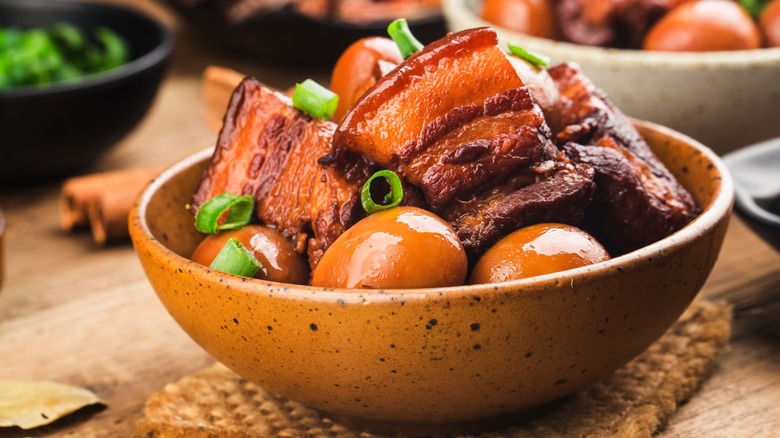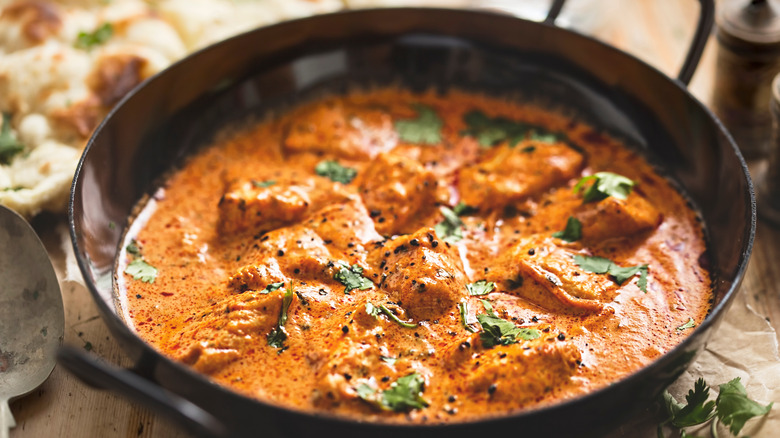Pork Indad: The Sweet And Spicy Indian Stew Perfect For Cold Weather
Stew is comfort food for the soul, especially in the winter months. Though beef and vegetable stews and chunky chicken stews are heavy hitters, ultimately any protein can yield a great one; and it's an easily accessible dish, as you can make it in a stovetop pot, slow cooker, or pressure cooker. Overall, there's something satisfying about sipping on a warm protein- and veggie-rich broth in a bowl in the chillier months.
Food Reference states that stew originally was just a means of survival, ancient tribes boiling ingredients together. As time went on, stew became a hearty meal packed with nutrients, with different variations and different combinations of ingredients all across the world. In Hungary, a go-to stew is goulash, due to the necessity to feed Magyar shepherds. Brittanica states that meat, onions, and seasonings (especially paprika) were cooked, then set in the sun to dehydrate, and placed into bags made of sheep's stomach lining; shepherds would travel with this, and add water when ready to eat. Another popular stew that we know of today is beef Bourguignon, which started out as a peasants' recipe dating back to 1400 A.D. This dish was a means for people to cook tough cuts of meat they had on hand. Every dish has a story, and a certain stew in India called pork indad has one as well.
What is pork indad?
According to Serious Eats, pork indad is a type of Indian stew that uses sweet and savory components. The dish is a Christmas dinner tradition for Manglorean Catholic households in India. In fact, the daughters of Manglorean households are taught to make this dish to impress future suitors — it's that good. The best part? You can use any leftover pork, with pork shoulder and pork belly preferred.
The dish's Indian roots are particularly expressed in the masala-style sauce. According to Deliciously Indian, the masala consists of white vinegar, onions, cumin, Kashmiri chiles, whole peppercorns, sultanas (which are raisins made from seedless green grapes, according to Healthline), garlic, green chiles, cloves, and cinnamon. Once you blend this mixture up, it creates a thick sauce that coats pork brilliantly, and cooks with water and sugar to thicken into a stew. However, Serious Eats changes it up by adding ginger and turmeric to the mix. Of all the spices listed, the ones that are most common in India include turmeric, cinnamon, cloves, cumin, and black pepper (via Master Indian).
Once the masala is made, simply cook covered until the pork is tender, and stir in mint leaves before serving. It's important to not skip the step of adding raisins and sugar, as those two components add the perfect amount of sweetness to such a savory meal. This stew pairs great with rice or crusty bread.

